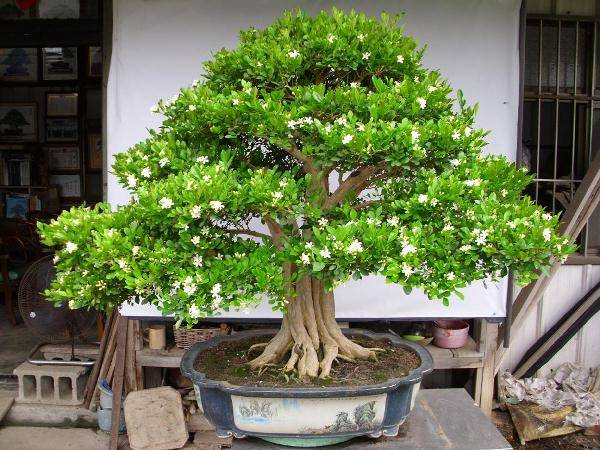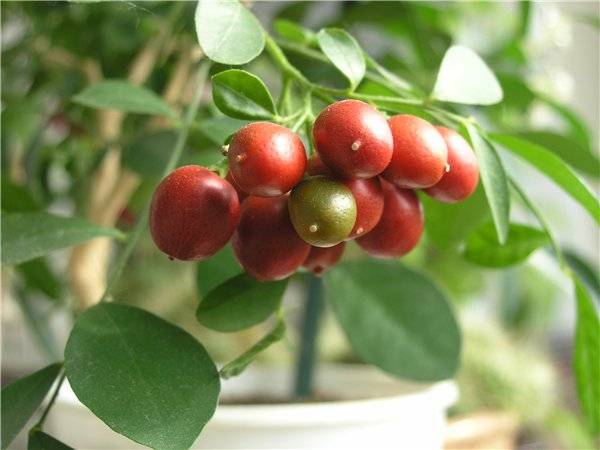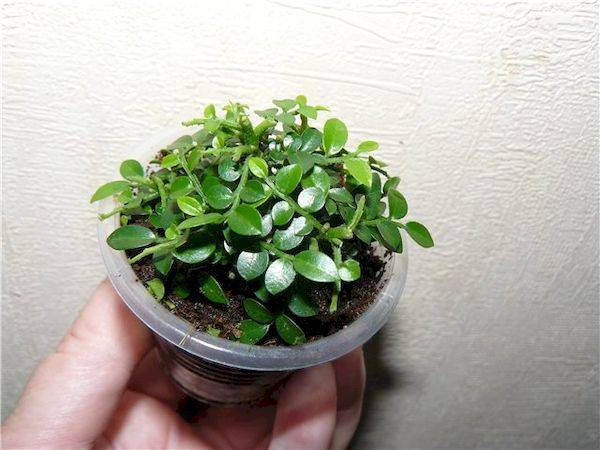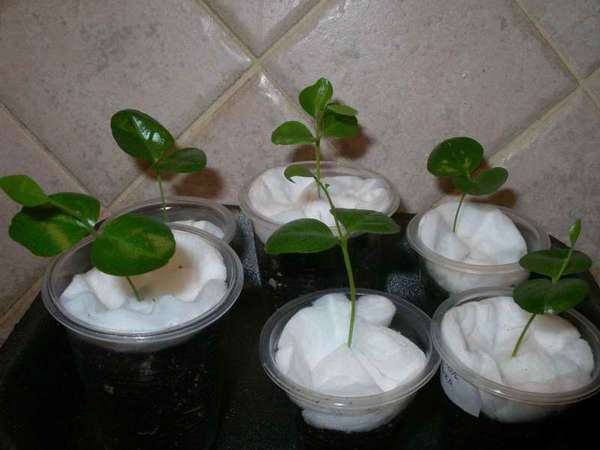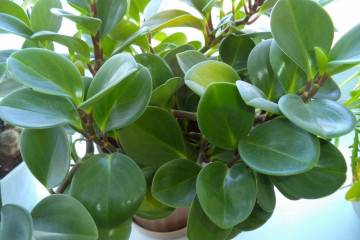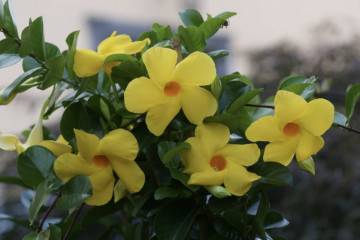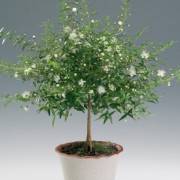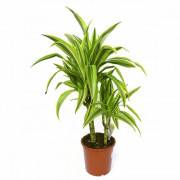Muraya - caring for the tree of Japanese emperors at home
Content:
The exotic plant muraya has about a dozen varieties. Growing territory - Southeast Asia. Muraya does not require special care when living at home.
Muraya - home care
Correct planting and compliance with the rules of lighting, watering and temperature conditions will help to get a living decoration of housing, blooming almost all year round.
The origin and appearance of the muraya plant
Muraya is a close relative of citrus fruits - lemon and tangerine varieties. It was first discovered by Swedish naturalists in the Himalayan region in the 18th century. The name was given to him in honor of the botanist Murray, who discovered the first species.
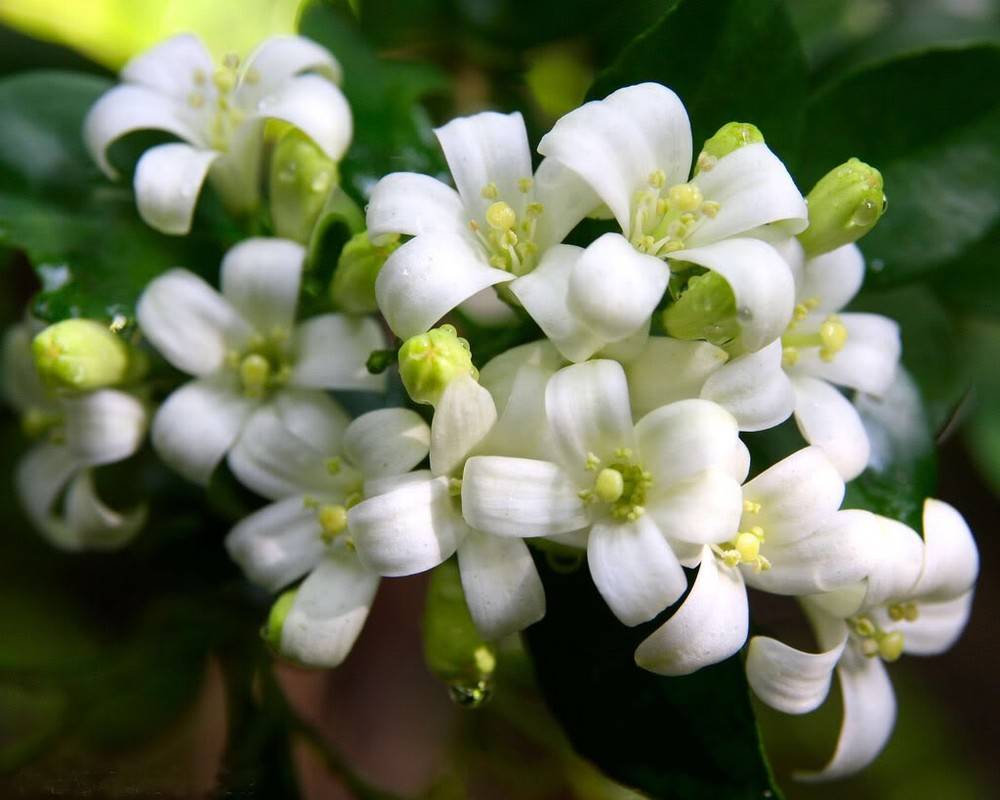 Blooming muraya
Blooming muraya
Murayi's description:
- thin trunk covered with brown bark;
- in height - up to 2 m;
- leaves are shiny and smooth;
- buds are located on them, white flowers with five petals appear from them in spring;
- edible fruits - red (blackish) in color, covered with a peel that resembles an orange;
- inside - a yellow bone.
Japanese emperors tree
The Japanese have used the plant to decorate their gardens for several centuries. For a long period of time, the flower was forbidden for general viewing - it was intended exclusively for the imperial family.
It was believed that its aroma helps to maintain health, helps in obtaining healthy offspring, relieves sexual impotence. Growing Murayi for ordinary people of the country threatened with death - one of the gardeners who stole the berry was executed by order of the Japanese emperor.
Plant flower description
On the territory of Russia, Muraya became an indoor plant. Flowers grow in tassels, each contains 10-15 pieces. They reach 2 cm in diameter, differ in a milky or white shade of petals, with yellow stamens. The scent of a flowering plant is reminiscent of jasmine.
Types and varieties of murayi
There are about 10 varieties of exotic flowers. In the Russian Federation, from 2 to 4 species are more common. The widespread Dutch variety does not bloom due to artificial growth stimulants. Attempts to actively feed it will lead to the plant dropping foliage.
Muraya Paniculata
Fast growing bushes can reach 3 m in height. The foliage is oval in shape, there are up to 11 pieces on one leg, the upper ones are larger in size than the lower ones.
Muraya Paniculata gives small berries of a red hue, which contain 2 seeds. Flowers form in inflorescences, occasionally there are single specimens.
Murraya Paniculata
Murraya (Paniculata variety) has a strong aroma, widely used in the cosmetic and culinary industries. The plant is a close relative of the Paniculata Murraya variety, but unlike it, it requires good lighting, abundant watering. It can grow in the form of a bush, bonsai or dwarf tree. In India, a seasoning is made from a capricious flower.
Muraya black-fruited Koeniga
Under natural conditions, it reaches 6 m in height. Differs in narrow and long leaves, white flowers, collected in large inflorescences - from 30 to 80 pieces in each. The fruits of the Muraya (König variety) are blackish, oblong, with a shiny skin.
Murraya exotica
Known to botanists for its tart smell, reminiscent of the aroma of rue, which appears when you touch the surface of the foliage. A large plant from afar can be confused with a lemon tree - its shiny crown of emerald hue resembles citrus leaves. It differs in slow and periodic growth - after a long period of hibernation, it rapidly increases in size. The development of buds takes 14-21 days, the flowers are large, self-pollinating.
Transplanting murraya after buying into a pot
Correct planting of a home flower guarantees its quick survival, timely flowering and fruiting. Violation of the rules will lead to the death of a young plant.
What is needed for landing
According to the description of professional gardeners, murraya requires a certain type of soil. The best soil is considered to be loose soil filled with organic additives, with an acidity level of no more than 7.5 pH. When buying ready-made mixtures in stores, it is better to focus on those specially designed for citrus fruits. Vermiculite must be added to them - to increase the indicators of soil looseness.
At home, when planting murraya, you can create soil with your own hands by mixing:
- leaf and sod land - 2 hours each;
- coarse sand - 1 hour;
- humus - 2 tsp
Choosing the best place
For the normal development of any flower, the correct selection of the pot is necessary. With each new movement, its diameter should be several centimeters larger than the volume of the previous container. Boxes that are too large can accumulate liquid in the root area and cause rotting. A lighted windowsill is considered a suitable place for muraya to live - a lack of ultraviolet radiation will lead to weak growth and lack of flowering.
Step-by-step planting process
For transplanting muraya at home, the following algorithm is performed:
- preliminary preparation of the container, soil, water;
- thorough loosening of the earth, removal of its upper layers and strong watering;
- careful handling of the plant along with the soil in which it grew;
- a small powder with a mixture and its easy tamping.
Reproduction of muraya
The plant can propagate by cuttings and seeds. Professionals argue that the first breeding method is less reliable.
Propagation by cuttings
It is recommended to do cuttings in the autumn:
- the cut branches are placed in water with a temperature of about 30 degrees;
- create a greenhouse effect by covering the container on top with polyethylene;
- maintain the temperature with bottom heating;
- after the formation of roots, the cuttings are transplanted into the ground, enriched with mineral fertilizing.
Growing from seeds
Before planting, the selected material is immersed in warm water for 2-3 hours. After the procedure, it is laid out on the surface of a mixture of sand and peat, taken in a ratio of 1 to 1. It is allowed to use ready-made peat tablets.
From above, the seeds are covered with earth - from 6 to 10 mm, in the form of a ball. A glass dome (jars) is installed on top. Plantings are kept at a temperature of about 25 degrees, under diffused lighting. Seedlings are expected in 30-45 days, after the appearance of three leaves, the seedlings are transplanted into separate pots.
Room muraya: home care
The flower does not make any special requirements for care, despite the prevailing opinion about its capriciousness. To obtain a healthy plant, you need to adhere to the requirements for watering, feeding and temperature conditions.
Watering mode
During active growth, Muraya requires abundant, but rare soil moisture. The next watering is done after it dries. The water should be free of chlorine and soft. From autumn, the amount of moisture is reduced, but make sure that the ground is not too dry.
Top dressing
In spring and summer, feeding is carried out monthly, preference is given to mineral and organic fertilizers. If a large amount of nitrogen is accidentally applied, the leaves will be colored even more, flowering will not occur. Florists advise using liquid dressings - they have a good effect on the root system of the muraya, accelerate the growth of flowers.
Features of care during the flowering period
The first buds appear a year after planting the plant in a permanent container. Caring for muraya at this time requires special attention:
- the first flowers are cut off for prevention;
- fertilize the land in a timely manner;
- monitor the general condition;
- when the foliage withers, the pot is transferred to another windowsill, the water is changed from tap to drinking water.
Features of care during the rest period
Dates of "rest" fall on November-February, but may be slightly shifted. At this time, there is no need for fertilizers, watering becomes rare. The flower is placed in a bright place, away from central heating radiators or heaters.
Preparing for winter
So that the muraya flower does not begin to shed its foliage, it should not touch the cold glass with it. It spends winter time on a windowsill located on the south side. To artificially increase daylight hours, it is necessary to use ultraviolet lamps.
Muraya leaves turn yellow - what to do
Yellowness on the leaves appears due to a number of reasons:
- increased alkalinity or lack of nutrients in the earth;
- sudden changes in temperature;
- insufficient soil moisture;
- excess feeding;
- improper care;
- aging plants.
When planted in a spacious container, chlorosis, the foliage begins to turn yellow and fall off en masse. To avoid the disease, the flower should not be drunk with tap water and bleach.
The exotic plant adorns the homes of many Russians. There is no particular difficulty in caring for it, it is important to water it in a timely manner, feed it and carry out prophylaxis against diseases. Lighting and temperature play an important role - non-compliance with their norms can lead not only to dropping foliage, but also to the death of muraya.
Video
